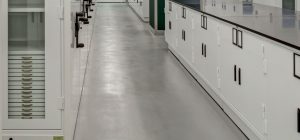1. Interior Environment
To ensure that you purchase cabinets that create and maintain the ideal preservation environment for your collections, look for cabinets with these features:
1. Vents
Facilitate proper air exchange rates with vents that can be adjusted from outside the cabinets.
2. Locks with 3-point Latches
Gain peace of mind knowing that collections are secure.
3. Channel with Closed-Cell Gasket
Ensure a tight seal by choosing cabinets that have a closed-cell gasket inside a steel channel.<
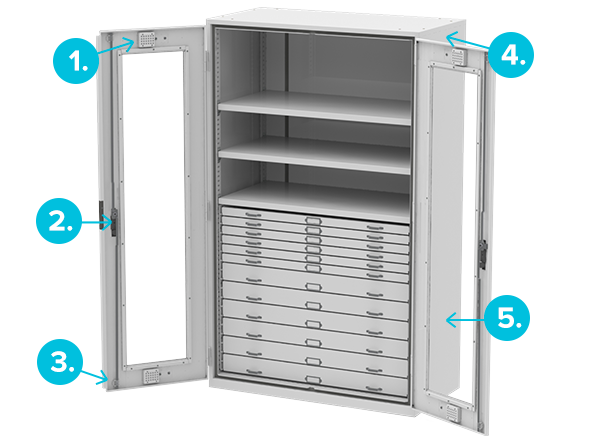
4. Watershield Cap
Protect collections from water damage in case of sprinkler deployment.
5. Non-Off-Gassing Paint Finish
Minimize the risk of contamination with non-off-gassing powder-coat paint.
2. Modularity
If future flexibility is important, choose modular units that can be stacked, ganged, stationary, or mounted on high-density carriages or caster bases. If your institution might need to add cabinets in the future, or if you might need to transfer trays and other accessories from one cabinet to another someday, you’ll want to select cabinets and accessories in compatible sizes.
Viking by Spacesaver cabinets feature integrated connection points that allow them to be stacked, ganged, stationary, or mounted on high-density carriages or caster bases.
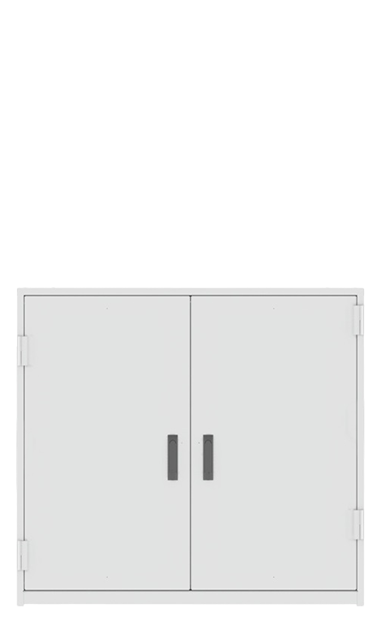
Counter-height cabinets can double as a work surface, and their modular design allows them to be safely and securely stacked if more cabinets are purchased in the future.
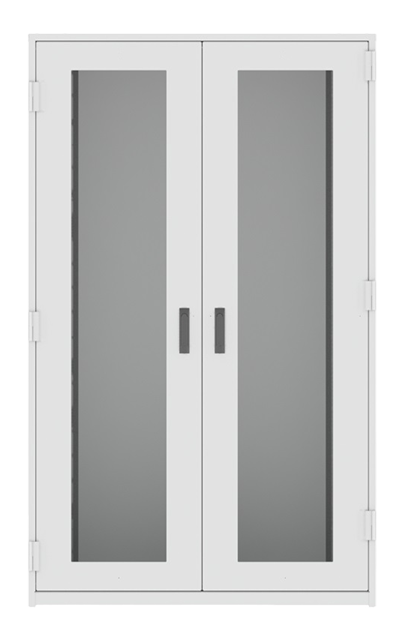
Full-height cabinets are more cost effective than counter-height cabinets, with a lower price per cubic foot of storage.
3. Mobility
Although most people think of cabinets as being stationary, they actually rarely stay in the same exact place over the entire course of their useful life. They might stay in one room for a decade or two, then be moved to a new room or be mounted on a “carriage” that allows them to move along rails to save space in collections storage areas. More and more museum staff are wanting at least a few cabinets that have full mobility, so they choose half-height cabinets on caster bases.

Stationary
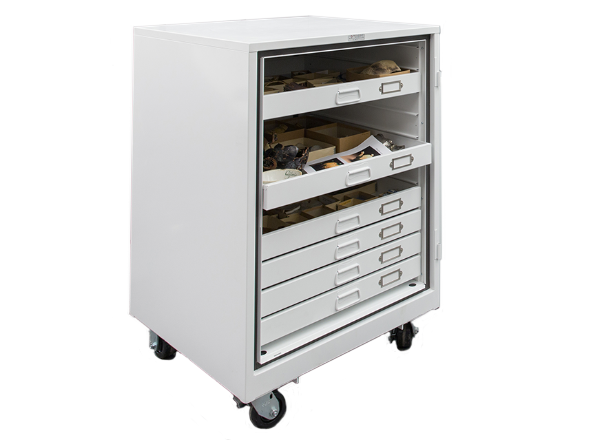
Casters
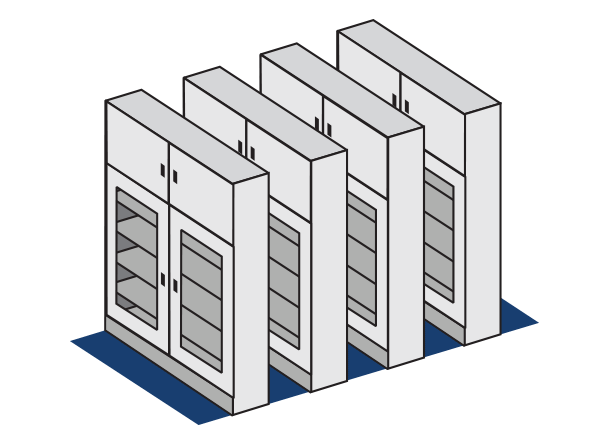
Compactors
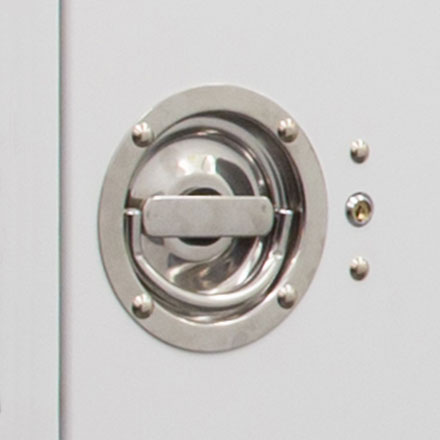
TIP: If cabinets might be placed on compactors in the future, be sure to select handles that are flush with the surface of the door. Handles that stick out will bump into cabinets when aisles are closed.
Keeping Objects Organized & Secure
Objects from this museum’s study collection are frequently moved from a secure storage space to classrooms down the hall. To keep artifacts organized and protected during transit to classrooms, the museum ordered locking cabinets on caster bases. The mobile cabinets are sized to accept trays from the larger cabinets, which helps with organization.
4. Configurability & Accessories
Look for interchangeable accessories that can be mixed and matched, along with removable interior panels allow you to change up the interior as your needs change. For instance, a Viking by Spacesaver preservation cabinet can be initially configured for two-inch trays, and the panels and accessories can be removed later and replaced with panels that support six-inch drawers, dividers, or even hanging rods and shelves.
The right accessories for any collection:
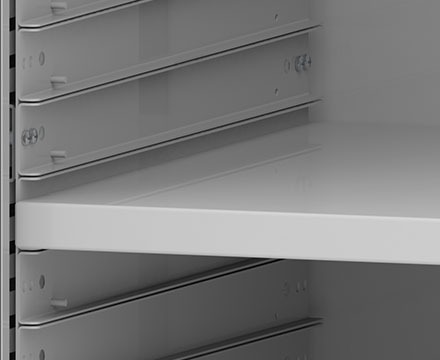
Adjustable Shelves
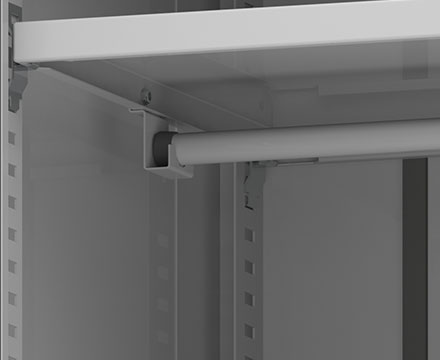
Half Shelf / Coat Rod
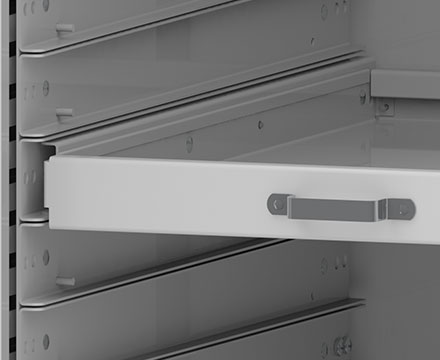
Standard Tray

Desiccant Tray
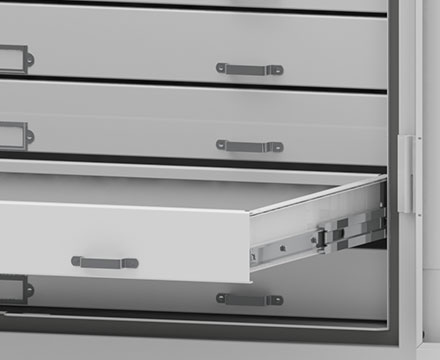
Full-Extension Drawer
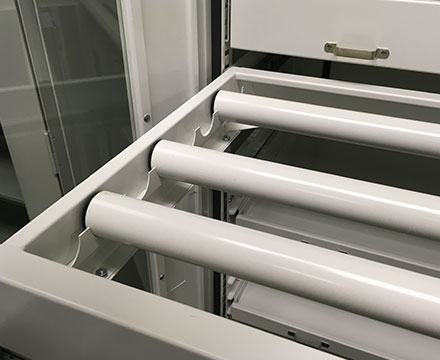
Rolled Textile Tray & Drawer
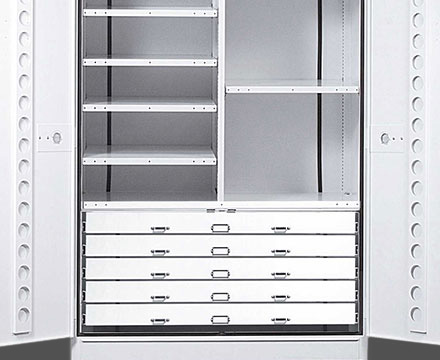
Partial-Height Center Divider
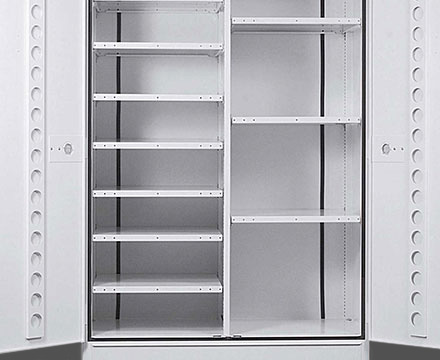
Full-Height Center Divider
5. Visibility
Depending on your collection’s needs and your institution’s approach, you can choose solid doors, which shield collections from light, or visual doors, which allow staff and visitors to view collections without disturbing objects or disrupting the cabinets’ internal preservation environment.
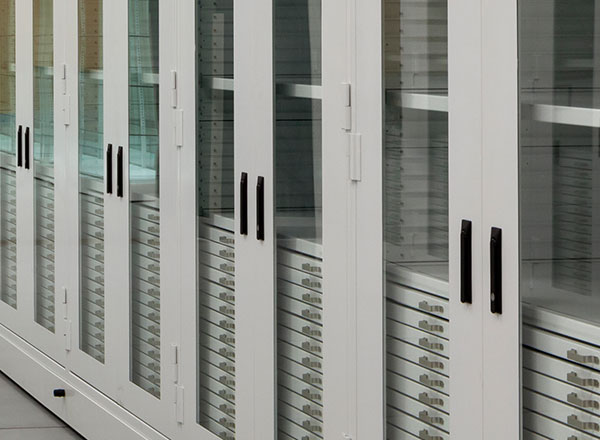
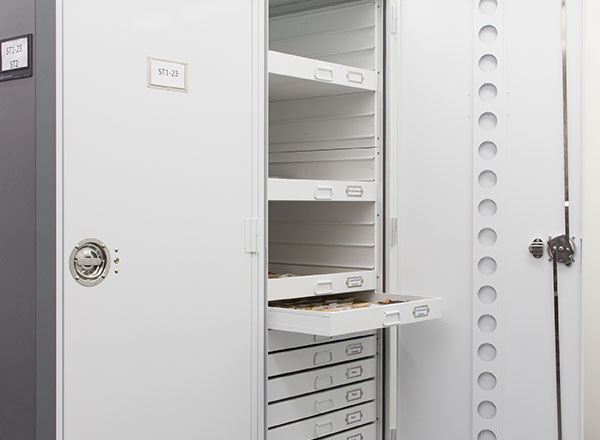
Connect with the Museum Planning Experts
The best museum cabinets will protect your collections for years to come. If you’d like to learn more about your options, contact us to schedule a free, no-obligation consultation. We can show you how other clients have solved collections storage challenges, and we can share insights and ideas to optimize your unique space. Contact us today to get started.
